- When deforestation caused by oil palms expanded in Indonesia or Malaysia, Mexican federal and state officials did everything they could to encourage planting these native African palms around the Lacandon Jungle.
- Between 2014 and 2019, at least 5,400 hectares (13,343 acres) of forests and jungle were lost due to the expansion of oil palm in Chiapas, Campeche, Tabasco and Veracruz, according to cartographic analysis carried out by the authors of the study “Cultivation of Oil Palm in Mexico.”
- At least 4,000 ha (9,800 acres) of oil palm are found inside the La Encrucijada Biosphere Reserve, a protected natural area on the Chiapas coast. The most remarkable monoculture expansion has occurred in the last 10 years.
“Thanks to the oil palm, I have money in my pocket.” He boasts it without modesty. He says his 11 planted hectares (27 acres), with 145 plants in each, give him good yields. If he didn’t have his palm plantation, he insists, “I’d be starving.”
The man is a palm grower and merchant in Palenque, Chiapas, in southeastern Mexico. In theory, the activity he carries out should not put him at risk, but he insists that his identity be protected so as not to have problems with those who are now buying and renting land in the state ejidos (commons) to plant palm. For this reason, we will call him Alejandro.
He is 55 years old and considers himself a connoisseur of oil palms: He knows that when they are planted, they are about 50 centimeters (19.6 inches) high, that in two and a half years, they reach 2 meters (6.5 feet), that the fruit harvest begins after three years — “the little ball,” as he calls it — whose productive life span is about 20 years because they can grow so high that it is challenging to cut them. He repeats it all without pause, like a litany.
Native African palms (Elaeis guineensis) arrived in Mexico in the mid-20th century. At that time, they went almost unnoticed. The enthusiasm for planting them arose several decades later. It was not something spontaneous. Starting in the 1990s, but especially in the 21st century, various government programs positioned oil palm as a crop full of virtues. They encouraged its planting in southeastern Mexico, especially in Chiapas and Campeche.
The government’s push to plant palm was carried out with greater zeal in the lands around the Lacandona, a region where one of the countrys’ most critical high jungles is located. It also happened in communities within protected natural areas that house mangrove reserves.
In Mexico, there are very few studies on the forest loss that the country has suffered due to oil palm expansion. The issue is even controversial among researchers, producers and officials. Many insist this monoculture is not a direct driver of deforestation in the region, especially since most of the plantations were installed on land used for cattle raising or agriculture.
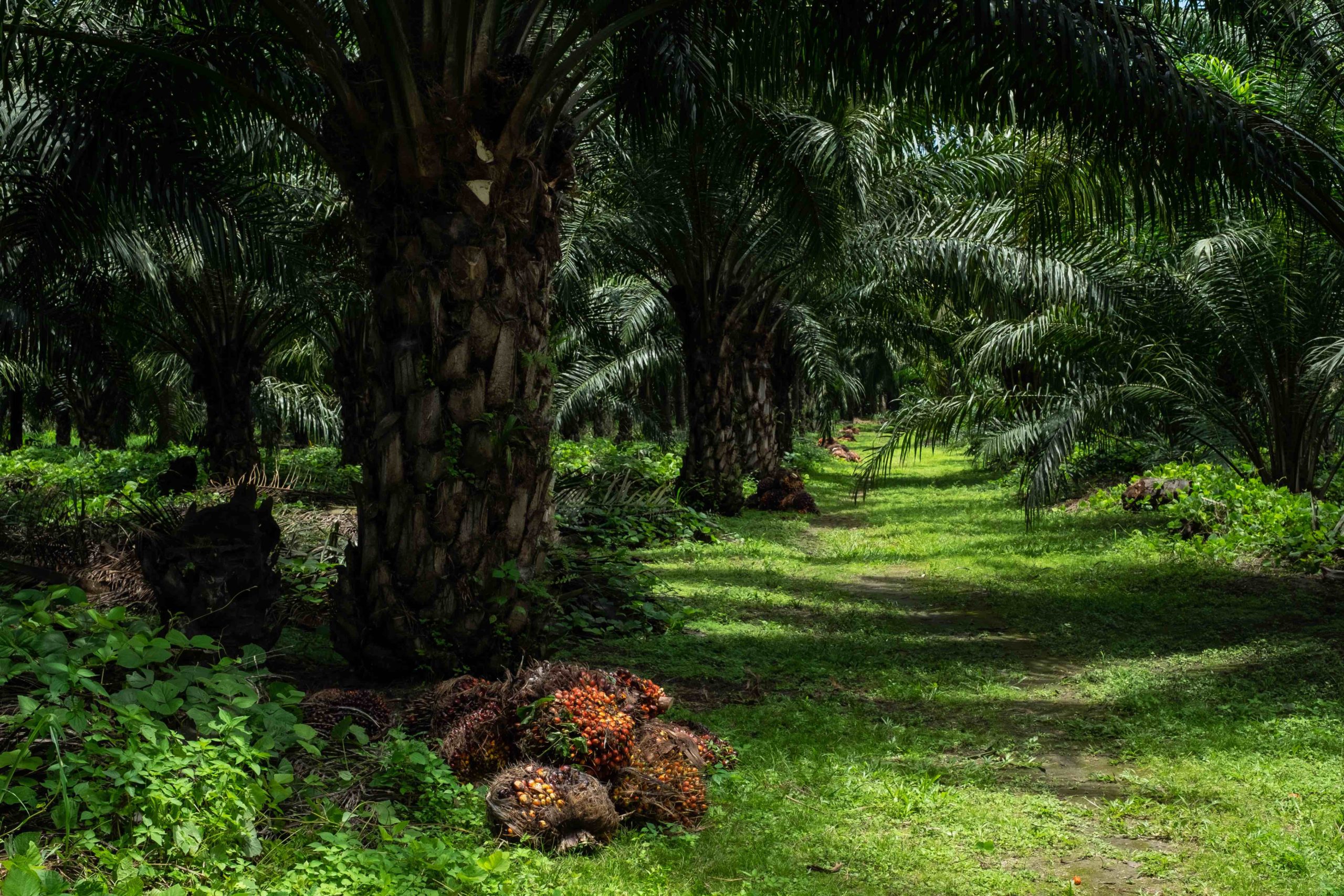
However, recent research published in May 2021 by the University of Greifswald in Germany in collaboration with the Center for Studies of Change in the Mexican Countryside and the civil association México vía Berlín, with funds from the German Foundation for Scientific Research, provides data that show how palm oil has taken over forests, jungles and mangroves.
Based on cartographic analyses and satellite images, the authors of the study “Cultivation of Oil Palm in Mexico,” coordinated by Anne Cristina de la Vega-Leinert and Daniel Sandoval, determined that between 2014 and 2019, at least 5,400 ha (13,343 acres) of forests and jungle were lost by the expansion of palm. This is based on a national sampling of 62,057 ha (153,346 acres) with oil palm crops. The deforested areas are located mainly in the municipality Benemérito de las Américas in Palenque, Chiapas, and in the states of Campeche, Veracruz and Tabasco.
In the municipalities of Benemérito de las Américas, Marqués de Comillas, Palenque and Salto de Agua, in Chiapas, the authors detected that high jungle was lost. In Veracruz, oak forests were deforested in Soteapan and Soconusco.

The study’s authors clarify that the deforested areas they identified only correspond to the period from 2014-19, so the data do not reflect the loss of forest cover related to plantations established before 2014.
“Yes, deforestation is linked to the palm, which several generations of palm programs have denied. The discourse of the palm that extends into idle lands, marginalized lands, cattle pastures, etc., has always been present. One of the achievements of this cartography is to say that not only is this crop expanding in these areas, but it is also replacing forest,” says de la Vega-Leinert, who is a researcher at the University of Greifswald and part of the Network of Social Studies on the Environment.
The researchers anticipate that, in a data update currently underway, the number of deforested areas will grow to represent close to 10% of the total monitored area. “The palm is expanding much faster now, and it is expanding in forested areas faster than in past decades,” says the Quaternary geoecologist.
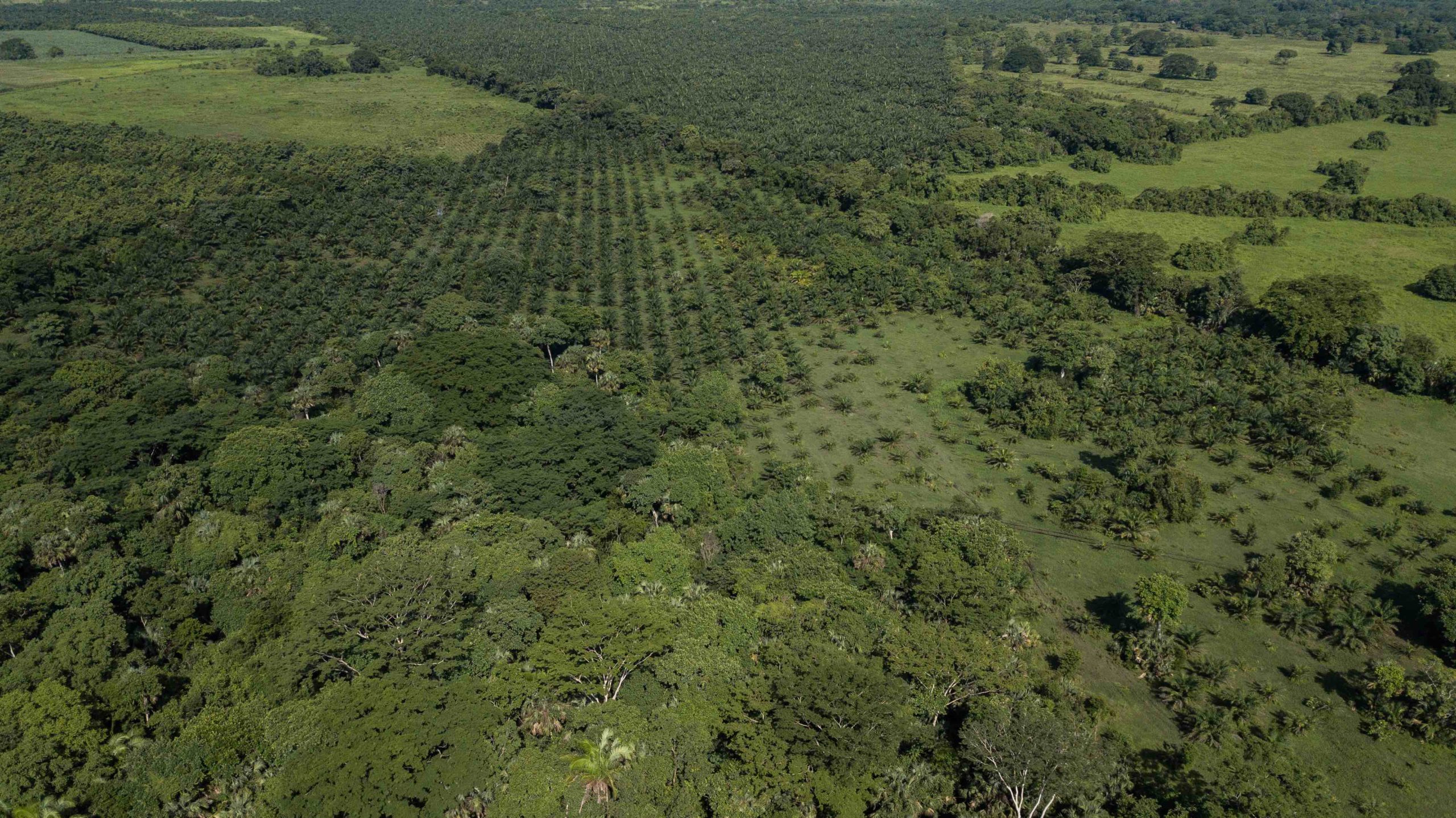
Palms that sway to the rhythm of the market
Palm oil is an ingredient present in many industrial products: shampoos, detergents, ice creams, chocolates, cookies, margarine, cosmetics, candles and cleaning supplies, to name a few. It is also used, to a lesser extent, as an agrofuel.
Organizations such as WWF and Ethical Consumer estimate that 50% of commonly consumed products contain it. However, its presence can only sometimes be identified because it needs to be clearly labeled: Companies use terms such as vegetable oil, vegetable fat, seed palm, palm kernel oil or palmitate.
According to a Bloomberg news agency estimate, each person consumes 8 kilograms (17.6 pounds) of palm oil yearly. This places it as the most consumed vegetable oil on the planet.
In the 1990s, the boom in palm oil broke out in different industries, mainly because it was more versatile and efficient than soybean or canola. “It is the oilseed with the highest productivity per hectare compared with any other plant,” highlights Jorge Coronel, sustainability manager of the company Oleopalma, which operates in Chiapas and is dedicated to the cultivation, production, processing and marketing of palm oil.
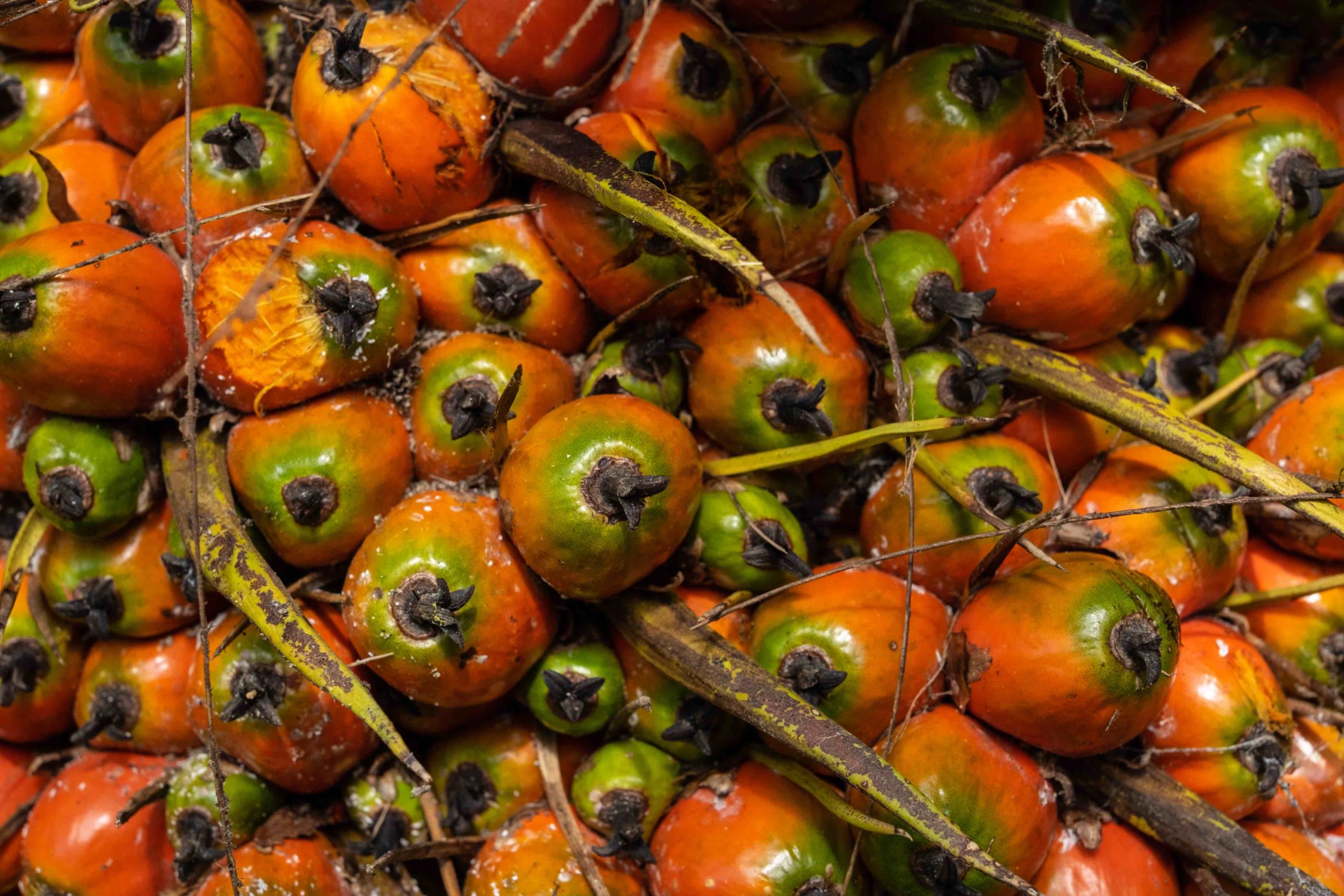
In the ‘80s, oil palm planting expanded enormously in tropical regions, especially Asia. Today Indonesia and Malaysia are the leading producers. They are also the countries where scientists and environmental organizations have reported for years that the expansion of this monoculture has caused the loss of large tracts of tropical forests.
In Mexico, the promotion of oil palm has had several moments. Although since the six-year term of Ernesto Zedillo (1994-2000) there have been programs to encourage its planting, it was during the administration of Felipe Calderón (2006-12) that the government’s enthusiasm for this monoculture increased.
Between 2017 and 2018, already in the six-year term of Enrique Peña Nieto, the Federal Ministry of Agriculture gave 1,114 beneficiaries from all over the country — 700 from Chiapas — stimuli for oil palm production for almost 61 million pesos (more than $3 million), according to a response to a request for information.
The data show the result of this governmental effort to encourage the planting of oil palms: Whereas in 2000, there were 16,754 ha (41,400 acres) with these plantations, by 2012, the national numbers increased to 61,000. The figures available from the Agri-Food and Fisheries Information Service (SIAP), which for oil palm only has figures up to 2019, show that in that year, there were 108,690 ha (268,578 acres) across the country inhabited with these palms that are distinguished by the redness of their fruits.
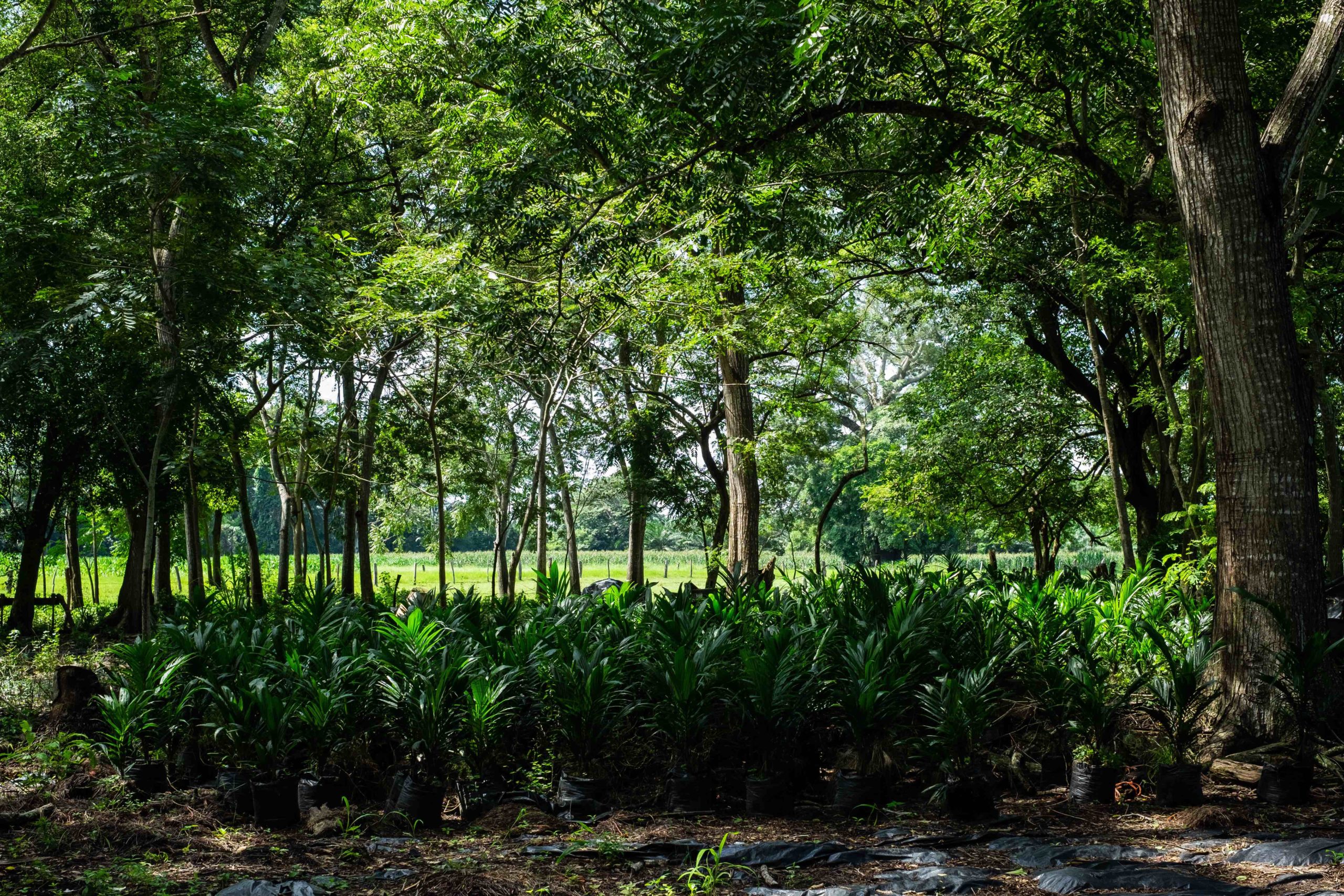
Taking root in jungle territory
Alejandro is recognized as an original palm grower, one of the first to commit to planting oil palm in Palenque, Chiapas. He entered the business in 1998 when state workers, governed by PRI member Roberto Albores Guillén, led an intense campaign to persuade people to plant oil palms. The argument: It would bring them more profit than cattle ranching and corn, bean and rice crops.
“They said it was the best,” he recalls. As part of the government programs, plants were given away, and subsidies were distributed. “They supported us to plant it; they supported us with money [more than 2,000 pesos per hectare, that is, $117 at the current exchange rate].”
For nearly 18 years, the federal government, especially Chiapas governors such as Pablo Salazar Mendiguchía, Juan Sabines and Manuel Velasco, promoted oil palm planting with particular vehemence.

They said Chiapas has the perfect conditions for the oil palm to prosper. And it’s true: The state has high humidity — the plant requires 1,800 millimeters (about half a gallon) of rain per year — an altitude of fewer than 300 meters (984 feet) above sea level, an average annual temperature between 22 and 28 degrees Celsius (71.6 and 82.4 degrees Fahrenheit), in addition to little wind and lots of light. The palm needs more than 2,000 hours of sunshine per year, according to the National Agricultural Planning 2017-30 of the Ministry of Agriculture and Rural Development.
These conditions, added to the boost that the state government gave to the crop, have led Chiapas to be the region in the country with the most significant area planted with oil palm.
Before 2008, Chiapas had at most 20,000 ha (49,400 acres) of palm. Since then, the number has more than doubled: In 2019, the entity registered 45,435 ha (112,272 acres), according to public data from SIAP. By 2022, that area increased to 57,000 (140,850 acres), according to figures from the Mexican Oil Palm Federation (FEMEXPALMA).
Scorned forest areas
In the region of the municipality of Palenque, where Alejandro lives, at least 180 people decided to plant oil palm in 1998. The majority, he says, did so on pastures where they used to raise cattle, others reconverted their agricultural lands and some cut down their acahuales, sites that in the past were farmland or livestock grazing areas but were abandoned to let them rest; places where it is possible to find young forest, areas where the tropical forest seeks to gain the space it lost in the past.
Despite their ecological importance, acahuales are only sometimes valued as they should be, so they are very susceptible to deforestation.
“They are despised because they are not the mature jungle. From a biological point of view, they are growing forests and, therefore, are critical forest areas,” says biologist Horacio Bonfil, who specializes in integrated ecosystem management.
Since April 2020, with the reforms of the General Law for Sustainable Forest Development, acahuales are already considered in the legislation as forestland, so if you want to clear them, you must apply to the Ministry of Environment and Natural Resources (SEMARNAT) for authorization to change the use of forestland. Doing so without permission is considered a crime.

The authors of the study “Cultivation of Oil Palm in Mexico” highlight that although oil palm plantations have spread mainly on land that was previously used for cattle ranching, “they have also replaced acahuales and, to a lesser extent, high jungle.”
In the cartographic and satellite image analyses they carried out, the researchers found that in the case of Chiapas, the high jungle was lost, due to oil palm, in the municipalities of Benemérito de las Américas, Marqués de Comillas, Palenque and Salto de Agua.
The expansion of oil palms adds to the activities — especially livestock and agriculture — that have contributed to the National Forestry Commission considering, due to the advance of deforestation, the municipalities of Marqués de Comillas and Benemérito de las Américas.
This is one of the areas of the Benemérito de las Américas, Chiapas, where the loss of forest cover has been detected due to the expansion of palm planting.
From 2001-21, the municipality of Benemérito de las Américas lost at least 44,000 ha (108,726 acres) of tree cover, according to an analysis carried out by Global Forest Watch (GFW) and the World Resources Institute (WRI-Mexico) shared with Mongabay Latam for this journalistic work. In the same 20 years, Marqués de Comillas lost 29,276 ha (72,342 acres) of tree cover.
In their research, the authors of the study on the cultivation of oil palm in Mexico also identified that around 30,000 hectares (74,000 acres) of palm were planted in places that the National Commission for the Knowledge and Use of Biodiversity considers as “terrestrial priority regions” in Chiapas; spaces that are characterized by their incredible biodiversity and vital for the ecosystemic balance.
In addition, at least 4,000 ha (9,800 acres) of oil palm were found inside the Palenque National Park and, especially in the La Encrucijada Biosphere Reserve, located in the coastal zone of Chiapas, which is considered a Ramsar site, a category given to wetlands of international importance.

Removing land from mangroves
“Oil palm crops are invading what in the official conservation discourse are the most important areas in terms of biodiversity, and that precisely have to be reserved,” says Sandoval, co-author of the oil palm cultivation study, based on the analysis of satellite images.
Sandoval points out that many new areas of oil palm expansion are within the La Encrucijada Biosphere Reserve and identifies a risk perimeter in the Montes Azules Biosphere Reserve in the Lacandona Jungle area.
In the last decade, oil palm expansion has been most notorious in the municipalities of Acapetahua, Mapastepec and Pijijiapan, all three located in the coastal zone and where the La Encrucijada Biosphere Reserve is located.

The municipality of Pijijiapan, for example, had registered only 315 ha (780 acres) planted with palms in 2010. That number was multiplied almost tenfold by 2019, when there were already 2,239 ha (5,530 acres), according to SIAP data.
Acapetahua, with just over 10,800 ha (26,700 acres) and Mapastepec, with 8,556 ha (21,140 acres), are the two municipalities that in 2019 had the most extensive area planted with oil palms in Chiapas.
Deforestation “is not from now,” insist the palm producers. “That has been for a long time,” says one of them who has plantations in the coastal area.

“There are plantations that are already about 20 years old. Others are more recent,” said biologist Juan Carlos Castro, director of the La Encrucijada Biosphere Reserve, in an interview with Mongabay Latam in March 2021.
Castro pointed out that different government programs that have sought to “develop communities” in the long run have only caused “deforestation, river contamination and social division.”
By 2021, within the La Encrucijada Biosphere Reserve, 4,000 ha had been identified where palm trees had been planted. Even within the core zone, 400 ha (988 acres) were counted. “There are palms,” Castro pointed out, “even on the banks of the canals, which is not allowed.”
One of the dilemmas within the La Encrucijada Biosphere Reserve is how to remove those plantations that are in critical places for the ecosystem and where, by law, they should not be. “You have to look for options for the people because it is also costly to dispose of a hectare of palm.”
Cutting down a single oil palm — not just cutting it down, but removing the stump with herbicides, chainsaws or heavy machinery — can cost up to 100,000 pesos, that is, more than $5,800 if the land is cleared by burning, according to Alejandro.
The director of the La Encrucijada Biosphere Reserve mentioned that the palm contributes to the loss of native vegetation, such as the zapotón, “a medium-sized jungle tree that in the past had an extensive distribution in the region and that currently only remains in some spaces.”
This monoculture also caused significant social changes from Castro’s perspective: “Auto-supply production and traditional knowledge have been left aside. The milpa [cultivation of corn, beans, squash and chile] has been abandoned, making the population very vulnerable. Now, this region, with the loss of mangroves, is more vulnerable to the impacts of climate change, and if the palm oil market collapses, people will not have anything to eat.”
Guadalupe Rodríguez, activist and researcher for Save the Jungle, points out: “They only told them to sow. … They never told them what damage this would bring over time.”

At the beginning of August 2022, federal and state agencies resumed the actions that have been carried out since 2018 to have an action plan to reduce the environmental impacts of oil palm in the La Encrucijada Biosphere Reserve. The intention is to form alliances among oil processing companies, producers and the government, according to a statement from the state government, where no concrete actions are required based on these alliances. For this text, an interview was requested with the environmental authorities in Chiapas, but a response still needs to be received.
De la Vega-Leinert emphasizes that it should not be forgotten that in the biosphere reserves — both in the La Encrucijada region and in Montes Azules and Los Tuxtlas, in Veracruz — there are strict biodiversity conservation zones and others that are buffers, where agriculture is permitted.
“That is one of the arguments that is being used, and there is a bigger problem: The palm is not prohibited in the sense that it is a crop that can legally expand in a biosphere reserve because it is not considered a crop that it puts the reserve in danger,” says the specialist.
“There is a debate there, but another thing that cannot be denied, for example, in La Encrucijada, is that due to the same ecosystem, the palm is also proliferating naturally; it is using the mechanisms of natural expansion. So not only is it being planted consciously, but the palm also has a life of its own.”

In Campeche, complaints against companies
Until 1997, oil palms were only planted in Chiapas. The following year, the plantations were extended to Campeche, a state that, like Tabasco, had just over 26,000 ha (64,247 acres) with this monoculture by 2019. Veracruz also enters the oil palm map with just over 7,200 hectares.
In the last decade, Campeche is the state where the planting of oil palms has accelerated the most. In 2010, the municipality of Carmen had 2,900 ha (7,166 acres); by 2019, that number had increased to 12,815 (31,667 acres). In Candelaria, there were 594 ha (1,468 acres) in 2010, and 19 years later, that area grew to 4,254 ha (10,511 acres).
Candelaria is also one of the municipalities in Campeche that have lost the most tree cover in the last 20 years: 162,000 ha (400,310 acres), according to the analysis of GFW and WRI-Mexico.
The municipality where the presence of oil palms has increased the most is Palizada, in the southwest of Campeche: In 2010, there were only 160 ha (395 acres). In 2019, more than 10,000 were registered. In that same municipality, there have also been complaints about the clearing of land where palm plantations have been installed.
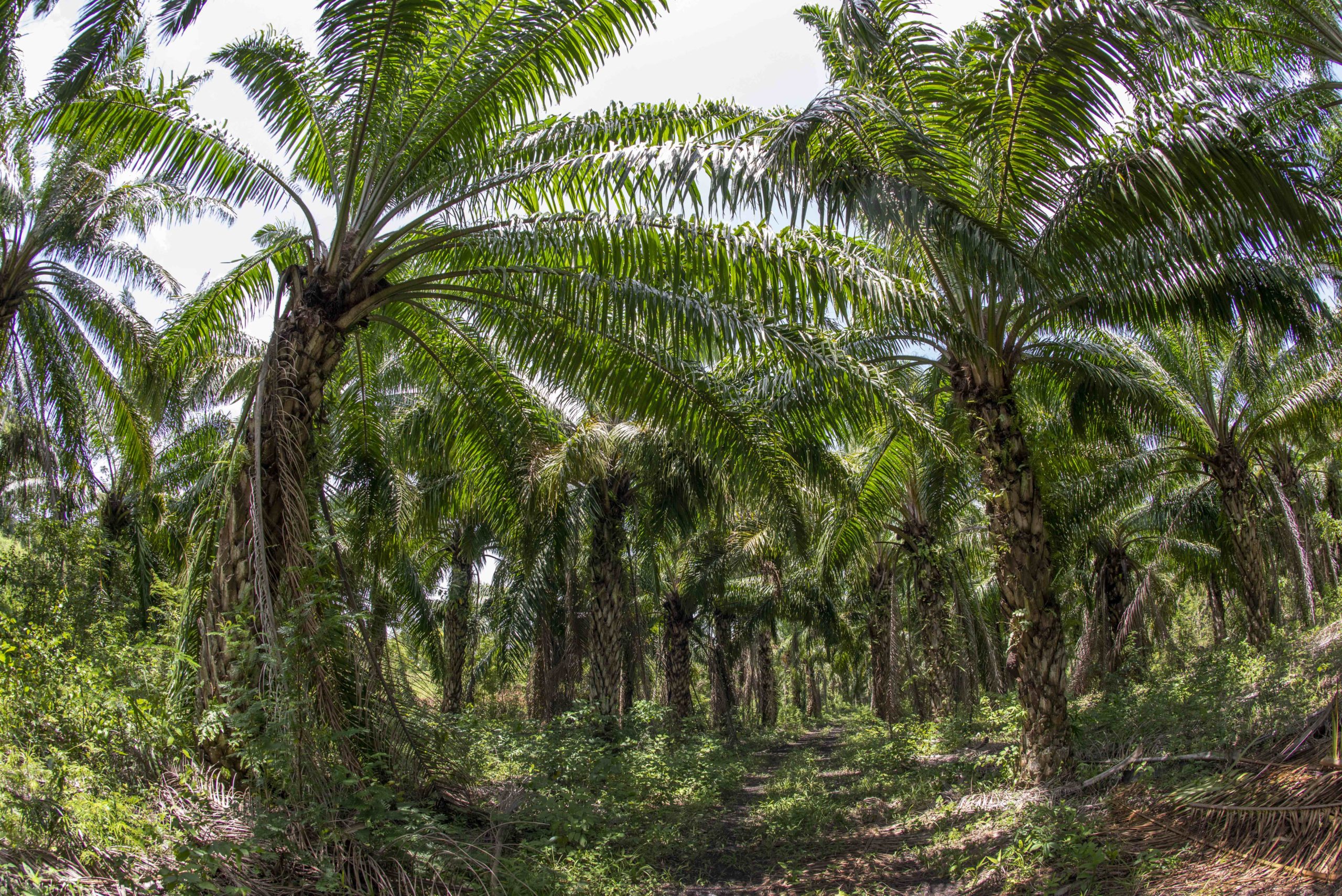
At the beginning of 2021, researcher Ricardo Isaac Márquez, from the Autonomous University of Campeche, published the study “The Expansion of Oil Palm Cultivation in Campeche from Small Producers to Transnational Agribusiness.” In addition to reviewing the public policies that, as in Chiapas, encouraged planting palms, he also presents data on the territory where these plantations were installed.
In the case of Campeche, a state where there are just over 29,334 ha (72,485 acres) planted with palm, the researcher points out that 16% of the plantations were established in areas where there was secondary vegetation, that is, in acahuales. And 12% occupied land with jungle remnants.
In addition, the researcher remembers what happened in the municipality of Palizada, in the southwest of Campeche. Since 2014, an agro-industrial company that, at that time, had about 4,500 ha (11,120 acres) planted with palm was denounced. The complaints were for deforestation, soil contamination and failure to comply with environmental regulations.

In April 2015, the Federal Attorney for Environmental Protection (PROFEPA), closed an oil palm plantation that, according to what was published at the time by media, belonged to the Costa Rican company with a presence in Mexico, Palma Tica S.A. de C.V., which was installed on 107 hectares (264 acres) without having the authorization to change the use of forestland.
In an extraordinary assembly held on Dec. 22, 2014 — before the closure by PROFEPA — Palma Tica changed its name to Palmeras Oleaginosas del Sur, according to documents from the Registry Management System of the Ministry of Economy.
In 2018, representatives of Palmeras Oleaginosas del Sur requested authorization to change the land use from SEMARNAT in the municipality of Palizada. This permission was denied to them.
In March of that year, PROFEPA issued fines of more than 3 million pesos (around $175,000) to a company whose name needed to be specified for illegally changing forestland use in 612 hectares of medium and high jungle in the municipality of Palizada. This reporter requested an interview with Palmeras Oleaginosas del Sur; however, the company did not respond by publication time.

Companies extend their plantations
In 2022, the payment per ton for oil palm fruit increased in Mexico. The main reason was the war in Ukraine, which limited Malaysia’s export capabilities.
In January, a month before the conflict between Russia and Ukraine began, a ton of crude oil was sold for 26,000 pesos (around $1,500); each producer was paid 3,393 pesos (around $200) per ton of fruit. Three months later, in April, the highest peak in the history of palm prices was recorded: A ton of crude oil was sold for 36,000 pesos (around $2,000), and a ton of fruit was sold for 4,501 pesos ($263).
Since then, prices have decreased until July, with a ton of oil at 31,000 pesos ($1,815) and a ton of fresh fruit at 3,961 pesos ($232).
For example, Industrias Oleopalma has acquired approximately 500 hectares (1,235 acres) in Benemérito de las Américas, Chiapas, to install a palm fruit bunch processing plant and grow its own plantations. “In the acquired properties, the change of use of forestland was not carried out since they are properties that had previous agricultural activities. One part had palm planting, and in another, there was a change of productive activity (from cattle to palm),” the company detailed via email.
Industrias Oleopalma was incorporated in Jalisco in May 2017 but in 2020 merged with Agroindustrias de Mapastepec, Agroindustrias de Palenque and Palmicultores San Nicolás.
Small palm producers, including Alejandro, point out that the companies rent or buy land in various ejidos. It is there, they say, where a change in the use of forestland is taking place without having the authorization of SEMARNAT.

Alejandro insists on keeping his real name secret. Talking about what happens today around the planting of the palm, he remembers, can bring him problems.
Producers who, like Alejandro, request anonymity denounce that companies use proxies to take over ejido land or to rent land to ejidos for up to 20 years.
“They are felling [trees] to plant palm,” says one of the producers in the Soconusco region. “Those large tracts of land belong to the companies. They work those areas, tearing down those plantations, but it is not the small producer.”
In the study on palm oil cultivation in Mexico, the authors warn: “The creation of large oil palm plantations, like other agro-industrial monocultures, allows not only the concentration of land in the hands of few actors but also the control of natural resources, such as water. … This phenomenon is frequently accompanied by the displacement of peasant communities and the transformation of lifestyles.”
Coronel, the Oleopalma sustainability manager, affirms that his company’s priority is to generate economic activity. “The holders or owners of these properties are looking for an activity to develop that gives them profitability and an income to survive or cover their expenses. It is important to have the context from a producer’s point of view; let’s forget if it is palm, soybean or any crop; at the end of the day, he owns the land and has the possibility of developing it.”
Grupo Propalma and Uumbal, companies dedicated to cultivating, processing and marketing palm oil in the country, were contacted for this report but have yet to respond to the interview request.
Social unrest toward a monoculture
“No more pollution.” “All living beings have the right to have a life full of peace.” “Take care of nature so that you protect your life.” These phrases were written on the banners used in the Feb. 18, 2022, demonstration in the Chiapas community of Crucero de Zamora Pico de Oro, in the municipality of Benemérito de las Américas, very close to the Guatemalan border.
With just over 8,700 ha (21,500 acres), the municipality of Benemérito de las Américas is the third-largest area planted with oil palm in Chiapas.
That day in February, around 2,000 people traveled nearly 10 km (6 mi) to protest against the oil palm plantations, especially against the wastewater discharges carried out by oil processing companies.

Inhabitants of the community demanded the suspension of operations of the companies that process palm oil, considering they pollute the environment. In addition, they asked the authorities to address their claims: “We have filed complaints with SEMARNAT, with the state government’s secretary of the environment, with PROFEPA; everyone has already opened files,” explains Javier Balderas, the community’s legal adviser.
Balderas points out that these complaints are several years old: “They are walking slower than a turtle, and they tell us that indeed, there are serious damages, that these companies did not comply with the law, for example, with the Environmental Impact Statement. What are they waiting for to close them? They always say it’s not that easy.”

Is certification a solution?
Until 2020, 18 extraction plants were operating in Mexico with the capacity to process 467 tons of fresh fruit bunches per hour. According to the 2021 FEMEXPALMA Statistical Yearbook, 12 of the plants were in Chiapas, three in Campeche, two in Tabasco, and one in Veracruz; the oil produced in these plants is sold to companies such as Cargill, Nestlé and PepsiCo.
The national production of palm oil — 299,000 tons in 2020 — does not cover the demand in the country for this product — 709,000 tons — so oil is imported from Costa Rica, Guatemala and Colombia. In these two last countries, complaints against palm oil companies for bad environmental practices have been documented.
In the current administration of Andrés Manuel López Obrador, there is no clarity about the country’s future of palm oil production. On the one hand, this crop is considered in the national agricultural plan, 2017-30. Still, since 2019, “this government disappeared all the support that went directly to palm,” emphasizes José Luis Méndez Hernández, president of the State Council of Producers of Chiapas.
In addition, oil palm is not one of the species promoted as part of Sowing Life, one of the central government programs of the six-year term.
In this scenario, the Round Table for Sustainable Palm Oil (RSPO) seeks to increase its presence in Mexico. The RSPO is a nonprofit organization that unites different sectors of palm oil production to develop and implement global sustainability standards for this product. However, in several countries, including Peru, this certification has received criticism and accusations that it has not been able to stop the effects on the environment.
“Certification is a greenwashing mechanism,” says Guadalupe Rodríguez from Save the Jungle. “They have lots of complaints of things that are badly done. … They have proven and reported cases that, despite being a certified monoculture, they continue to use pesticides, violate human rights and displace people.”
The RSPO emailed that its guidelines “have evolved into one of the most rigorous sustainability certification standards worldwide.” In addition, they added, the RSPO is a member of the ISEAL Alliance, “which demonstrates the commitment to establish solid and credible social and environmental standards.”
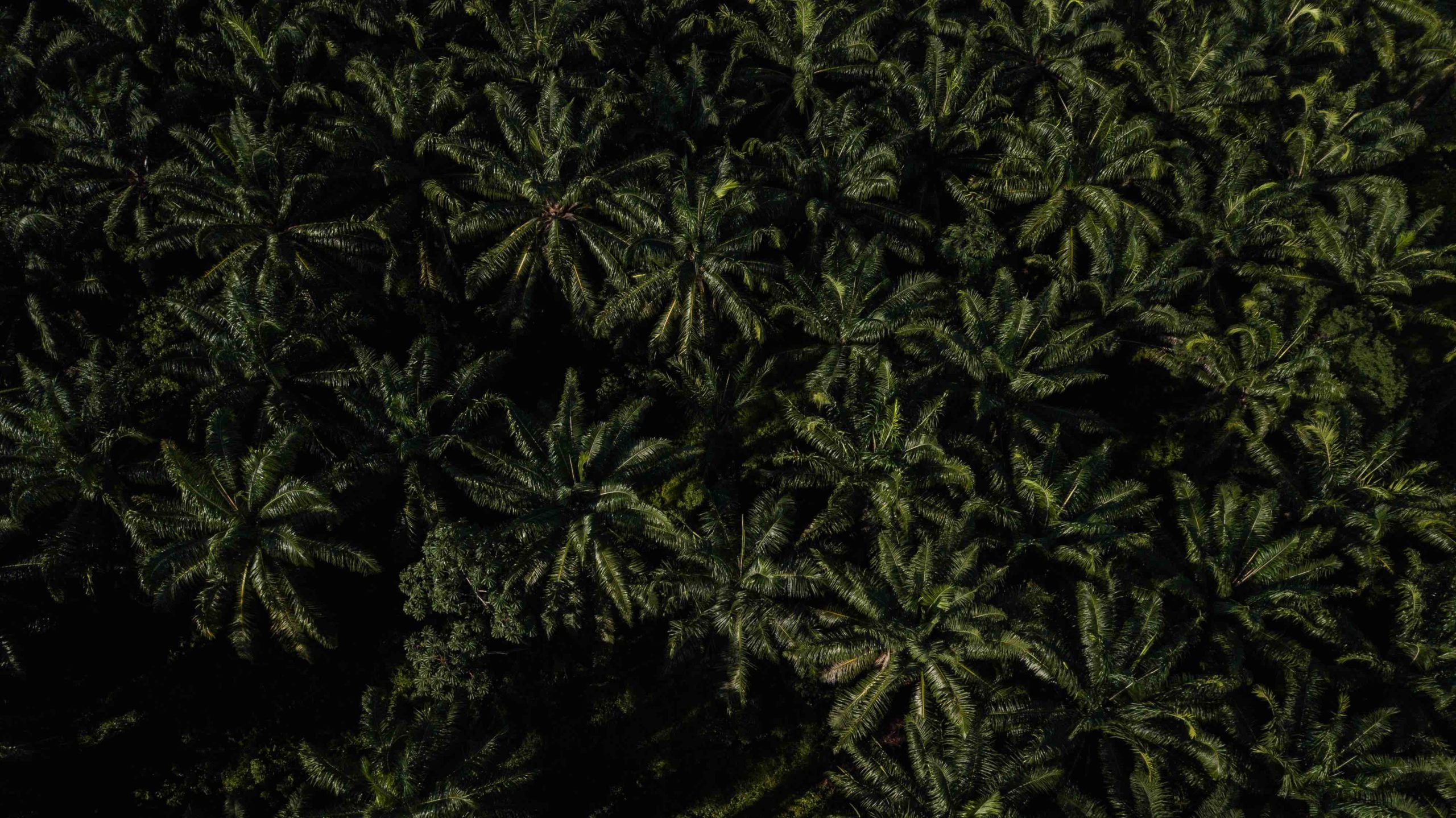
In 2018, Mexico began a process of national interpretation of the RSPO principles, criteria and indicators, which include that fire is not used to prepare the land before palm planting and aims to ensure that future oil palm developments are carried out without environmental damage. The process concluded in June 2020. “There were many conflicts; I did not like the document they produced at all,” says José Luis Mendez Hernández, president of the State Council of Producers of Chiapas.
Specifically, says the producer, he failed to delve into the requirements that must be met by the land where extractive plants can be installed. “There are extractors in undesirable points, and the document no longer says so. That is not fair because we wore ourselves out making that document and they did not include it in the end,” says Mendez. According to the RSPO, the certification unit comprises the palm oil mill and its supply base.
Meanwhile, like other small producers, Alejandro is already discovering the requirements to certify their plantations. “We will have to get certified because the companies that buy the fruit from us want us to get certified because later they will not buy the fruit from us. Many of us have not entered it, but they are pressuring us.”
Alejandro only hopes that the certification does not imply an outlay of money because he wants to continue taking advantage of the bonanza that oil palm enjoys today.
Banner image: In the 1990s, oil palms began to be planted more intensively in Chiapas. Image by Isabel Mateos.
This story was reported by Mongabay’s Latam team and first published here on our Latam site on Aug. 31, 2022.













